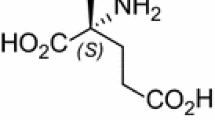Summary
A chiral compound [4R-[4α,6ß(E)]]-6-[4,4-bis(4-fluorophenyl)-3-(1-methyl-1H-tetrazol-5-yl)-1,3-butadienyl]-tetrahydro-4-hydroxy-2H-pyran-2-one (R-(+)-1) was prepared by the lipase-catalysed stereoselective acetylation of racemic 1 in an organic solvent. Chiral R-(+)-1 is a hydroxymethyl glutaryl coenzyme A (HMG CoA) reductase inhibitor and a potential anticholesterol drug candidate. Among various lipases evaluated, lipase PS-30 from Pseudomonas species efficiently catalysed acetylation of the undesired enantiomer of racemic 1 to yield the S-(−)-acetylated product 2 and unreacted desired R-(+)-1. A reaction yield of 48 mol% and an optical purity of 98% were obtained for R-(+)-1 when the reaction was conducted in toluence as solvent in the presence of isopropenyl acetate as acyl donor. Lipase PS-30 was immobilized on Accurel polypropylene (PP) and the immobilized enzyme was reused (five cycles) in the acetylation reaction without loss of enzyme activity, productivity, or optical purity of the R-(+)-1. The enzymatic acetylation process was scaled-up to 501 and a 640-l volume (preparative batches) at a substrate concentration of 4 g/l. R-(+)–1 was recovered from the preparative batches in 68–71% recovery yield with 98.5% gas chromatography homogeneity index and 98.5% optical purity. The S-(−) acetate 2 produced by the acetylation reaction was enzymatically hydrolysed by lipase PS-30 in a biphasic system to prepare the corresponding S-(−)-1.
Similar content being viewed by others
References
Abramowicz DA, Keese CR (1989) Enzymatic transesterifications of carbonates in water-restricted environments. Biotechnol Bioeng 33:149–156
Babiak KA, Ng JS, Dygos JH, Weyker CL (1990) Lipase-catalyzed irreversible transesterification using enol esters: resolution of prostaglandin synthons 4-hydroxy-2-alkyl-2-cyclopentones and inversion of 4S enantiomer to 4R enantiomer. J Org Chem 55:3377–3381
Cambou B, Klibanov AM (1984) Comparison of different strategies for the lipase-catalyzed preparative resolution of racemic acids and alcohols: asymmetric hydrolysis, esterification, and transesterification. Biotechnol Bioeng 26:1449–1454
Chen CS, Wu S-H, Girdaukas G, Sih CJ (1987) Quantitative analyzes of biochemical kinetics resolution of enantiomers. 2. Enzyme-catalyzed esterifications in water-organic solvent biphasic system. J Am Chem Soc 109:2812–2817
Csuk R (1991) Baker's yeast mediated transformations in organic chemistry. Chem Rev 91:49–97
Dordick JS (1989) Enzymatic catalysis in monophasic organic solvents. Enzyme Microb Technol 11:194–211
Engel K-H, Bohnen M, Dobe M (1991) Lipase-catalyzed reactions of chiral hydroxyacid esters: competition of esterification and transesterification. Enzyme Microb Technol 13:655–660
Fulling G, Wolfgang E, Keller R (1990) Enantioselective enzymatic esterification of chiral alcohols using vinyl acetate: a concept for reaching the desired xtent of conversion. Cotting LG (ed) Opportunity Biotransformation. Elsevier Publishing, London, UK, pp 184–194
Geresh S, Gilboa Y (1991) Enzymatic syntheses of alkyds. II. Lipase-catalyzed polytransesterification of dichloroethyl fumarate with aliphatic and aromatic diols. Biotechnol Bioeng 37:883–888
Hirata H, Higuchi K, Yamashita T (1990) Lipase-catalyzed transesterification in organic solvent: effect of water and solvent, thermal stability and some applications. J Biotechnol 14:157–167
Hirtake J, Inagaki M, Nishioka T, Oda J (1988) Irreversible and highly selective acylation of 2-halo-arylethanols in organic solvents catalyzed by a lipase from Pseudomonas fluorescens. J Org Chem 53:6130–6133
Jones JB (1986) Enzymes in organic synthesis. Tetrahedron 42:3351–3403
Khmelintsky YL, Levashov AV, Klyachko NL, Matinek K (1988) Engineering biocatalytic systems in organic media with low water content. Enzyme Microb Technol 10:710–724
Kirchner G, Scollar MP, Klibanov AM (1985) Resolution of racemic mixtures via lipase catalysis in organic solvent. J Am Chem Soc 107:7072–7076
Klibanov AM (1986) Enzymes that work in organic solvents. Chemtech 16:354–359
Macrae AR (1983) Lipase-catalyzed interesterification of oils and fats. J Am Oil Chem Soc 60:291–294
Matsuo T, Sawamura N, Hashimoto Y, Hashida W (1981) Interesterification of oils. US patent no. 4268527
Simon H, Bader J, Gunther A, Neumann S, Thanes J (1985) Chiral compounds synthesized by biocatalytic reduction. Angew Chem Int Ed Engl 24:539–553
Sit SY, Parker RA, Motoe I, Han W, Balasubramanian H, Cott JD, Brown PJ, Harte WE, Thompson MD, Wright JJ (1990) Synthesis, biological profile, and quantitative structure-activity relationship of a series of novel 3-hydroxy-3-methylglutaryl coenzyme A reductase inhibitors. J Med Chem 33:2982–2999
Yamada H, Shimizu S (1988) Microbial and enzymatic processes for the production of biologically and chemically useful compounds. Angew Chem Int Ed Engl 27:622–642
Author information
Authors and Affiliations
Additional information
Correspondence to: R. N. Patel
Rights and permissions
About this article
Cite this article
Patel, R.N., McNamee, C.M. & Szarka, L.J. Enantioselective enzymatic acetylation of racemic [4-[4α,6β (E)]]-6-[4,4-bis(4-fluorophenyl)-3-(1-methyl-1H-tetrazol-5-yl)-1,3-butadienyl]-tetrahydro-4-hydroxy-2H-pyran-2-one. Appl Microbiol Biotechnol 38, 56–60 (1992). https://doi.org/10.1007/BF00169419
Received:
Accepted:
Issue Date:
DOI: https://doi.org/10.1007/BF00169419




